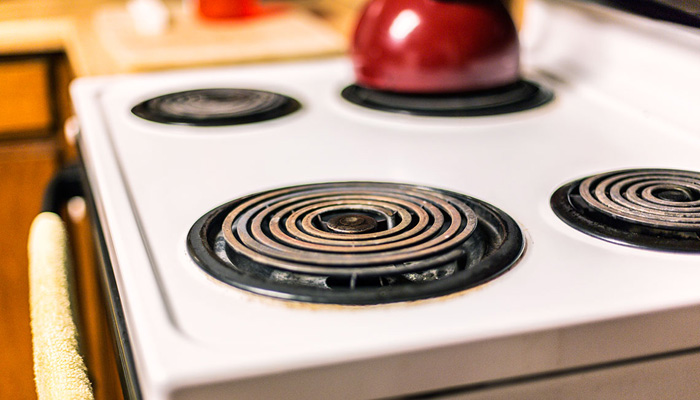Rethinking Lifestyle
Kitchen Jewellery

My kitchen stove was built sometime in the 1970s. I bought it as part of a full set of cheap, old appliances when I moved into my house ten years ago. Recently a friend came to visit with his family. He reported to me later that his kids had asked him after leaving, “Why is their stove so old?” I loved hearing this, and I loved his answer: “Because it works.” He was exactly right.
Not long afterwards, another friend told me about her trip to the appliance store to replace her stove. There was nothing wrong with the old one that couldn’t be fixed – except that, as usual, the parts cost more than buying a whole new stove. The appliance salesman was excited to show her the modern models she could choose from. They were all fitted with the usual fragile electronics and motherboards. There’s no simpler electric device than a stove, really – it’s just electricity and a resistor (element), with some variable switches. Then she asked about features like a 110V outlet for her kettle, an automatic on/off oven timer, and a clock that doesn’t disappear when your “fancy” alarm timer is active – sorry, those are ‘deluxe’ features, if you can even get them.
And yet it seems to me that every stove I ever saw 25 years ago had those features. Why would I pay $1000+tax for a stove that has none of these features, buy a 5-year ‘protection plan’ for $180+tax, and come back to do it again in 8 years? Is it because a used 1985 model under $100 that’s easy to repair, has all these features, and will almost certainly outlast anything you can sell me is … the wrong colour? “But what about a glass top?”, you ask. So easy to clean, right? I guess, but I prefer my enameled metal top over some scratched, stained ceramic tops I’ve seen. Friends who own them are rightly nervous to use them for canning, too – it could damage it*. Still, there are older glass-top models to be had cheaply.
I’m all in favour of a comfortable, attractive home but let’s get things straight. A stove is for cooking. It spends some of its time (hopefully a lot) under spaghetti sauce and oil splatter, and the rest of the time it’s utterly ignored. Once in a long while, a visitor comes over and might think, “Oooo! My stove is much prettier”. Great! So much the better! As long as your house is clean and comfortable, you should never forget this: Nobody thinks much about what your house looks like. They only think about what their house looks like compared to yours. You’ll make their day.
Over the years I’ve seen innumerable appliances and furniture at the side of the road – exchanged for something “better” that is invariably inferior in almost every way. I’ve often thought of warehousing the oldest and best-built pieces, keeping them for a day when people begin to see through planned obsolescence to start refusing to buy one pretty piece of kitchen jewellery after another. Who knows – maybe that will never happen. In the meantime, I’ll fix my stove whenever it needs something. That’s one piece of junk I won’t be letting go of quickly.
*On a coil element stove, you can ask for a “canning” replacement coil. It’s sturdier and slightly elevated to avoid overheating, and it’s basically the same price as a regular one.




